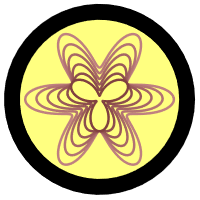As detailed on the syllabus, your assessment grade in this course will be determined by your proficiency on a variety of standards. (This is known as Standards Based Grading.)
Here is the list of standards that form the basis for this class, along with guiding questions that address each standard. You will be assessed on these standards throughout the semester.
What is different from the high-stakes "tests" that you might associate with a math class, there is an opportunity for you to re-assess your knowledge if you did not master the knowledge the first time around.
The Standards
Standard 1. Mathematical Collaboration. Have you met with classmates and completed the writing prompts that are assigned at regular intervals in the class?
Standard 2. Functions. Can you give the definition of a function? Can you determine if a given rule, table, or curve represents a function?
Standard 3. Parent Function Recognition. For linear, parabolic, cubic, square root, and exponential functions: Given the curve of a function, can you determine which type of function it represents? Given the equation of function, can you determine what shape its curve will have?
Standard 4. Transformations. Can you determine the sequence of transformations that transforms an initial curve into a final curve? Can you determine the equation of the final curve? If you are given an equation of a composition of transformations, can you determine its graph by applying a sequence of transformations from the initial curve?
Standard 5. The Unit Circle. Can you convert between radians and degrees? Can you find specified angles on the unit circle? Can you determine the x- and y-coordinates of a point on the unit circle? Do you understand how the unit circle is related to the sine curve and the cosine curve?
Standard 6. Basic Parametric Functions. Can you convert a function of the form y=f(x) or x=g(y) into a basic parametric function of the form (p(t),q(t))? Can you draw the graph of a basic parametric function?
Standard 7. Transformations of Parametric Functions. Can you apply reflections, translations, and dilations? How does the graph of (a•p(bt)+h,c• q(ct)+k) compare to the graph of (p(t), q(t))?
